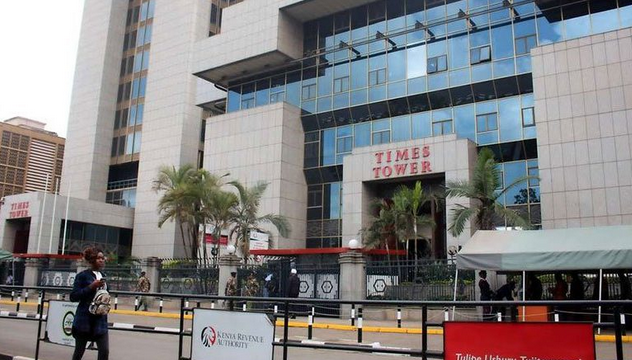Kenya Revenue Authority has hit the two trillion mark after collecting Sh2.112 trillion as of April 20, with optimism of reaching the Sh2.66 trillion target for the current financial year.
The collection reflects a performance rate of 96.5 per cent against a target of Sh2.18 trillion.
During the period, revenue collection registered a growth of 6.1 per cent, reflecting an upward trajectory in collection compared to Sh1.99 trillion realised in the same period during the previous financial year (2023–2024).
Domestic taxes amounted to Sh1.39 trillion between July-April 2024–25, translating to a revenue growth of 4.7 per cent over Sh1.32 trillion realised in July-April 2023–24.
Customs revenue collection also grew by 9.1 per cent after registering a cumulative collection of Sh722.7 billion, compared to Sh662.4 billion that was collected in the same period of 2023–24.
Agency revenue (collected on behalf of other government entities) collection amounted to Sh205.5 billion, registering a performance rate of 111.8 per cent against a target of Sh183.789 billion.
Exchequer revenue (collected on behalf of National Treasury) amounted to Sh1.906 trillion.
This represents a growth of 3.6 per cent compared to collection of Sh1.840 trillion that was collected in the same period in the previous financial year (2023–2024).
“In spite of the progressive growth, the collection was affected by various economic indicators that directly drive revenue collection,” KRA Commissioner General, Humphrey Wattanga, said in a statement.
The various indicators that influence revenue performance have generally moved contrary to expectations, affecting revenue mobilisation, he noted, as the country’s GDP grew at a slower pace of four per cent in Q3 2024, compared to six per cent in Q3 2023.
Similarly, the Purchasing Managers Index (PMI) averaged at 49.8 between July 2024 and April 2025, indicating a slowdown in private sector activities.
This subdued demand was further evidenced by a 16 per cent drop in import values, an important indicator of domestic demand for both raw materials and consumer goods.
Additionally, in spite of the Central Bank of Kenya lowering its base lending rate to 10.75 per cent, commercial bank lending rates remained high, averaging 17.22 per cent, as a number of banks had yet to adjust their rates.
“This disparity negatively impacted private sector borrowing and investment. However, there are strong indications that most banks are working towards ensuring compliance,” Wattanga noted.
Despite a stronger shilling, the value of imports declined, particularly oil which dropped by 10.2 per cent.
Export earnings also shrank by 3.6 per cent, driven by declines in key sectors such as tea (–18.6%) and horticulture(–6.2%).The adverse effects from most of these indicators is beginning to dissipate as most of them start to experience a turnaround in the recent past.
A recent policy change has allowed taxpayers to offset their current tax liabilities using adjustment vouchers such as refund and overpayment adjustment vouchers.
According to KRA, a number of taxpayers utilised Sh53.8 billion in adjustment vouchers accrued from previous periods to offset current tax liabilities, reducing effective collections.
Moreover, the reclassification of SHIF and the Housing Levy from tax reliefs to allowable deductions before tax computation has lowered the Pay-As-You-Earn (PAYE) tax base and despite revenue mobilisation being impeded by impacts from the above factors, KRA enhanced its compliance through various initiatives.
For example, the implementation of a Centralised Release Office has significantly improved the efficiency of cargo clearance processes.
This reform has positively impacted customs revenue performance, with revenue growth increasing from an average of seven per cent as of the end of January 2025 to 22.6 per cent in March and 14.4 per cent in April 2025.
Additionally, the initiative has contributed to enhanced import values, resulting in an increase in average daily non-oil revenue from Sh2.09 billion during the period July to February 2024–25, to Sh2.31billion in March and April 2025.
To further improve tax compliance and convenience for landlords, the Electronic Rental Income Tax System (eRITS) was recently rolled out.This digital platform enables landlords and property owners to seamlessly compute, file and pay Monthly Rental Income (MRI) tax.
It also includes property management tools such as property registration and tenancy management, providing a comprehensive, user–friendly experience on a single platform.
“The Tax Amnesty Programme has also seen strong uptake, generating Sh13.5 billion in revenue between December 2024 and April 2025. This initiative aims to encourage voluntary compliance by offering relief on penalties and interest for taxpayers who settle their principal tax liabilities,” , Wattanga said.
The taxman has so far waived Sh164.9 billion in penalties and interest, benefitting over three million taxpayers.
The introduction of the Electronic Tax Invoice Management System (eTIMS) has enhanced the ability to detect and prosecute VAT fraud schemes.
By digitising invoicing and tax reporting, eTIMS promotes greater accountability and has led to improved levels of tax compliance across the board.
The enhanced Dispute Resolution Framework has expedited the resolution of taxrelated disputes, , Wattanga noted, allowing for quicker recovery of revenue previously tied up in legal processes.
As a result, Sh21.9 billion was released for collection during the period from January to March 2025.
The authority is confident that it will continue with the upward trajectory and achieve the set Sh2.66 trillion target for the current financial year ending June 30, to enable the government sustain the country’s economy.
by MARTIN MWITA


